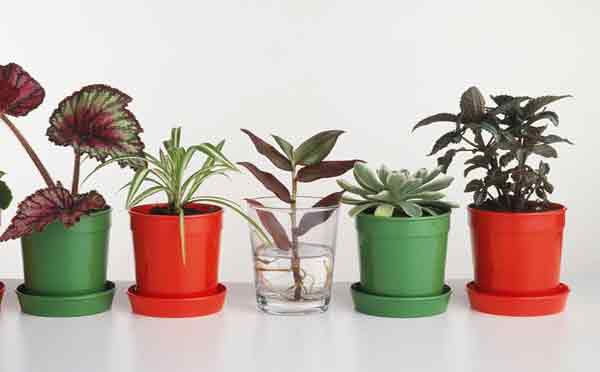

‘Little vases, water or milk bottles are ideal for rooting.’ Photo: Getty Images
London, UK (BBN) - I am the crazy cat lady of the house plant world. I have so many of them. Closing the curtains has become quite the task, as you snake between specimens all vying for light. And yet I continue to take cuttings.
Many house plants are easily rooted in water. I love to watch roots grow, particularly in winter, when there’s something so cheering about a life so willing, reports The Guardian.
Truth be known, it makes most sense to take cuttings in spring and summer. On top of that, cuttings taken in water are somewhat inferior to those taken in soil, in part because water doesn’t offer the most nutritious beginning. But that doesn’t stop me.
Philodendrons, begonias, tradescantia, pilea, peperomias, ctenanthe (but sadly not calathea) and rhipsalis are just a few of the types that will readily root in water.
In general, cuttings should be 10-15cm long – larger cuttings may take, but the ratio of stem to root often makes for a weak plant. Use a sharp knife or secateurs and cut just below where a leaf attaches to the stem, known as a node. If you leave a section of stem below the node, this will likely rot off.
As well as the lowest leaf, you may need to remove a few more, leaving just the top two or three. Essentially, any part of the cutting that sits in water should be free of leaves that will rot. Fetid water is not a nice place to start a life.
Also remove any flowers that are present, to prevent the cutting from developing seed, which will waste energy that would be better diverted to creating roots. And, again, the flowers may go mouldy and rot.
Little vases, water or milk bottles are ideal for rooting. If there is a wide neck, you may have to create some sort of mesh across the top so that the cutting doesn’t fall into the water. You can also have several cuttings together in one container.
Choose a smaller container than you’d imagine. The cutting will release hormones into the water to encourage rooting, and a great volume of water will dilute them, so that the process takes longer.
Rooting will generally occur in three to four weeks, though some begonias and pilea take much longer. Keep the cuttings somewhere bright and warm, and be patient.
If a particular stem in a group of cuttings goes mushy and starts to rot, whip it out before it contaminates the rest. When there are numerous roots, 2-5cm long, the cutting is ready to be potted up.
Pot into pre-moistened potting compost in a suitably sized container with drainage, and keep the compost moist but not sodden until you see new growth. If the cutting grew in the water – and many do – it may be a good idea to prune it back a little when potting up. This will force new growth at the base and make for a bushier plant.
BBN/MMI/ANS